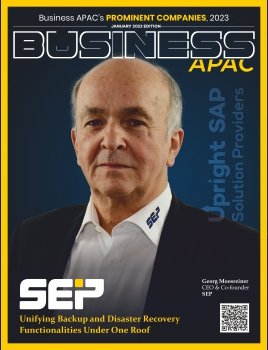Considering that content marketing is a crucial component of interacting with a digital brand, it’s no surprise that businesses develop comprehensive marketing schemes surrounding content creation and content publishing. However, without proper tools to create, oversee, and position content continuously and effectively, much of the marketing endeavor goes to waste, this is why companies should enhance marketing with headless CMS. A CMS might be that tool which becomes integrated into a business that champions a more effective content marketing experience.
A content management system allows an enterprise to generate, edit, and maintain content across channels quickly in a consistent fashion. Whether a blog post with heavy SEO and images, a how-to video or photo story, or customer experience personalization, robust content management systems offer content creators everything they need to create a total quality of content and monitor relevant analytics.
Content-generating enterprises using a content management system for their content marketing endeavors need not worry about the other systems still necessary for adequate human interaction and accessibility; the internal collaboration of the enterprise makes for seamless access and interaction of messaging throughout the enterprise.
Streamlining Content Creation and Publishing
Maybe the biggest hurdle content marketers have to overcome is advocating for the content creation, editing, and release process among teams and software/hardware use. If there is no uniformity or ability to use the same tools, for example, content could be siloed, inconsistent, and, in the end, non-scalable. A CMS solves content creation difficulties because it advocates for better content workflow possibilities and collaborative content creation solutions that allow for simultaneous ease of use by different team members.
Content creation features are user-friendly within a CMS so that editors, digital designers, and marketing professionals can generate/alter content without requiring technical knowledge. A CMS features versioning and scheduling abilities, as well as team collaboration in real-time to support editorially needed approval and generation of content creation in time to meet a deadline. For example, an online retailer can use a CMS to automatically generate product pages, create blog posts for a year-end sale, and schedule an entire month’s marketing campaign in one session.
The same is true for a news outlet seeking to generate breaking news and multimedia content. Because CMS is the content creation and publication nexus, marketers experience no quality variances or output delays; if they’re generating an excellent story, they’ll have it everywhere it needs to be when and where of publication on time and in location.
Optimizing Content for SEO and Search Visibility
Without SEO, content marketing is out of sight, out of mind. A content management system that includes SEO capabilities lets marketers ensure their content is seen without interrupting the publishing workflow. For instance, a powerful CMS allows marketers to change meta descriptions, edit URLs, and include fields for keyword research so that all content is SEO friendly from the start. In addition, built-in XML sitemaps and schema markup created automatically help search engines better index content, resulting in higher placements and more organic traffic.
An example would be a travel agency with a CMS that ensures their destination guide and associated blogs and ultimately, pages to make a reservation are easy to find via keywords and boosted rankings from those looking for their ideal vacation. A university relatively simple could more effectively arrange its course offerings and materials to rank just as easily. With the capability of CMS features for SEO, companies can genuinely have their content beyond reach, create more organic traffic, and subsequently, more engagement.
Personalizing Content for Target Audiences
Today’s buyers expect premium personalized digital interactions. A content management system (CMS) allows brands to create personalized content by tracking interactions, audiences, and engagement statistics. This analytic-based information allows brands to pivot their content marketing strategies to better suit what customers like and where they tend to show interest. For instance, a CMS also allows for personalized content in the moment, showing one user one version of a website or marketing campaign and another a different approach based on the user’s intent.
Someone searching for women’s casual shoes may see one set of recommended items while someone focused on athletic shoes may see a completely different set of offerings. A SaaS company can modify blog entries based on the user’s position/title with their company. In addition, AI-powered CMS can track what content users view and recommend similar pieces, products, and services afterward, generating more engagement and more intensive conversion rates. Through such data-driven personalization, brands are sure to match better with their consumers and enhance the customer experience.
Enhancing Multi-Channel Content Distribution
Content marketing no longer exists merely on the website and blog. As brands must reach audiences through social media, email, and additional touch points like mobile and video, a CMS protects the consistency and quality of the content and its intention across the many platforms where audiences may interact with a brand. For instance, a CMS enables cross-channel publishing since brands can publish the same content to various locations from one centralized command instead of having one delegated effort for distribution elsewhere. A retail brand can launch a new sale campaign on its website and, at the same time, link into its email and social follower efforts.
A CMS gives brands the opportunity to be consistent, more discoverable, and engaged with cross-channel syndication and publishing on an automatic basis. For example, a healthcare brand may have a CMS that allows it to publish its educational wellness tips blog on its website and at the same time, on its app, syndicating content through social media channels so patients receive informative tips, no matter how they interact with the brand. Brands that have a CMS at their disposal for cross-channel publishing are more likely to exist in the digital realm, more engaged, and consistent.
Measuring Content Performance with Analytics and Insights
Content marketing is based on continual tweaks and improvements based on performance. A CMS with an analytic software integration can track multiple key performance indicators (KPIs). Marketers can track anything from traffic generated to engagement levels to conversion rates to understand how effective they’re being with their content marketing. For instance, a restaurant company can run its business through a CMS that tracks customer engagement, time on page, and shares.
This specific restaurant can better determine what content is better for its followers and adjust accordingly. If healthy eating tips are shared more than food blogs or they have higher engagement levels, the restaurant can determine that this information is more effective and create like pieces in the future. In addition, CMS platforms with analytics enable marketers to quickly ascertain what content performs best, what headlines, and what CTAs and then engage and convert more effectively. Thus, this data provided by the CMS analytics allows for future refinements of content marketing efforts by a brand for better ROI and appropriate sustainable growth going forward.
Automating Content Workflows for Efficiency
There’s a lot to do when it comes to content marketing from ideation to creation, publication, and editing. A CMS with workflow automation assists in all these endeavors as it automatically engages in rudimentary functions, tracking approvals and due dates for content. For example, a CMS can automatically publish a blog post at a certain time, send a document for internal approval, and notify the team of an edited document minimizing the need for manual operation while boosting productivity levels.
This suits a larger marketing team or agency that works on many projects simultaneously. With an automated content creation process, you’ll never experience a content backlog, you’ll benefit from collaborative efficiencies, and you’ll always have quality content available on demand.
Improving Collaboration Between Marketing and Content Teams
Content marketing fosters an all-hands-on-deck approach between writers, designers, SEO specialists, and marketers. But without a CMS, a lack of content creation communication and a non-hierarchy approach places content creation and dissemination on a micro growth path with little to no return. A CMS creates the content creation and dissemination playground where changes and approvals happen in real-time. The access through a CMS with team-focused permissions allows everyone from every team to only see what they need to see without holding up someone else.
For example, writers can write while editors make changes and comment, which assists marketers in appropriately timing integration and release. In addition, integration of the CMS with project management systems allows marketers to monitor the content development process and its status in the publishing pipeline at any given time, keeping teams on deadline and avoiding any roadblocks that could disrupt a seamless publishing experience. Improved collaboration equals improved efficiency and improved content marketing.
Increasing Customer Engagement Through Interactive Content
Quizzes and polls, live webinars, interactive infographics, and more are legitimate paths a company can pursue when looking for interactive content, which still beats out everything else for contests, recognition, and customer engagement. A CMS allows a company to create, control, and plug in the interactive content easily, bridging the tone with a larger marketing campaign.
For example, a CMS that is also an e-learning platform could plug in assessment quizzes or instantaneous feedback right in the blog post content. A travel agency could provide destination guides and interactive itinerary builders directly on the page. The fact that such interactive content can also be powered by a CMS means that brands have the potential to produce engaging dynamic experiences that people not only interact with but also remain on the page long enough for conversion.
Enhancing Content Localization for Global Marketing Strategies
Content localization is an important capability that allows brands to reach global audiences and interact with markets that differ culturally and linguistically. If a CMS possesses the ability for multilingual content management, that means this company would be able to translate and localize its messaging on a geographically specific scale without needing to duplicate content creation efforts on a globally expansive basis.
For instance, an eCommerce clothing company that starts in Europe and Asia can use a CMS with content localization to automatically adjust the language of its product descriptions, blog entries, and homepages based on geographical positioning and personal preferences. In addition, a CMS ensures consistency with geo-targeted promotions, currency changes, and even location-specific SEO, as they are all relative to local market trends and, in the end, resonate and convert better. With a CMS, content localization does not compromise branding and allows companies to maintain their global marketing strategies.
Future-Proofing Content Marketing with Headless CMS Solutions
Because technology will only get better in ways we’ve yet to even think of voice search and AI suggestions merged into a VR or AR experience companies need a content delivery method that can cater to anything in the pipeline. A Headless CMS is future-proof, as separating the back and front end allows companies to deliver content on websites, apps, IoT, and more without restriction.
A Headless CMS enables a media company to publish the same story to smart speakers, an app, and wearables the same story, just in different formats across various digital entry points for consumption. A B2B SaaS company can use AI personalization features to change content on the fly for every single user. These companies that take the plunge to use a Headless CMS understand that their content is being transmitted and formatted essentially while also being set up for any future digital enhancements that may come to keep brands one step ahead of the competition.
Conclusion
A CMS is an integral part of comprehensive content marketing initiatives because it enables a brand to produce content on the fly, satisfy SEO requirements, customize, distribute across various channels, and evaluate effectiveness. An optimal CMS ensures a brand’s content is always up-to-date, functional, and timely. Increased audience engagement, enhanced workflow efficiencies, and scalable content creation almost ensure that a well-working CMS empowers marketing teams to produce and maintain quality content that fosters growth, improves brand reliability and customer loyalty, and enhances customer experiences. From automated solutions and segmentation to cross-platform publishing, businesses can streamline their content marketing strategies and stay one step ahead in an advancing digital world.






















